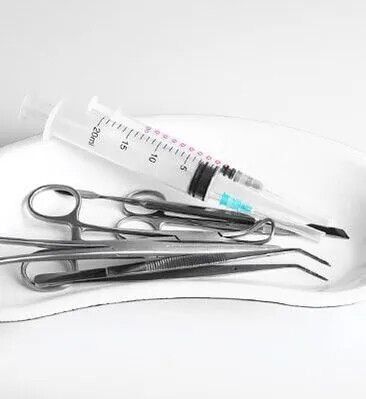Surgery
For a severe or recurrent nail pathology, a surgical approach may be appropriate. Cosmetic Nail Solutions use three different surgical procedures, which are chosen on a case-by-case basis.
These include removing the entire nail (total nail avulsion), removing a side of the nail (partial nail avulsion) or removing a small section of the nail (debridement).
What is surgery?
This procedure is minor and is performed in our clinical rooms. All three procedures are performed under local anaesthetic to prevent pain during the procedure. The clinician undertaking the procedure will loosen the skin (skin folds) from around the nail and separate the nail from the nail bed using specialist equipment. Only the part of nail that is diseased will be removed.
Your clinician may ask as to whether you wish to prevent the nail from growing back which is a sure way of preventing re-occurring nail pathology. We do this by destroying the nail matrix with a chemical called phenol which is applied to the cuticle after the affected nail has been removed. Alternatively, you can allow the nail to re-grow in conjunction with a combination of other treatment protocols in the hope that the nail will grow back healthy (there is no guarantee of this)
Following your procedure, the affected toe will be heavily bandaged and regular dressing changes will be required for a couple of weeks until the wound site has healed. Your clinician will monitor your wound site closely over the following four weeks.
Who performs this procedure?
At Foot Foundation, our qualified podiatrist will perform nail surgery of the toenails.
If fingernail removal is required (which is much less likely), you will be referred to your GP or a specialist to have this procedure performed.
What are the risks involved?
Your clinician will outline in depth the risks involved with this procedure. However, the three main risks involved with this procedure are:
Pain
Infection – you can reduce the risk of infection by keeping the surgical site clean
Abnormal nail growth – when the nail grows back, it may grow back in an odd or thickened shape

How do I get diagnosed?
Your diagnosis takes place during a consultation with our Foot Foundation clinician. They will take a thorough medical history, consider your risk factors, complete a comprehensive physical examination.
Once a correct diagnosis has been made, your Foot Foundation clinician will discuss the most appropriate treatment protocol with you and answer any questions that you may have.

